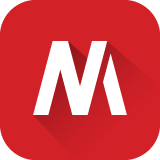Process
The goal of any UX design process is to create an amazing product for your users. But, when it comes to the UX design process, there’s no one-size-fits-all solution. While there are some practices I follow on every project, I typically tailor my process to fit specific project needs.
Whether a project require a lightweight process, or one full of activities, the core of my process consist of the following 5 key phases:
01: Define
Before we can start building a product, we need to understand its context for existence. During this phase, we brainstorm the concept of the product at the highest level with stakeholders.
This phase can include:
Stakeholders Interviews
Interviews with key stakeholders of the project to gather insights about the project’s goals and key values.
Value Proposition
Key aspects of the product are mapped out to help the team and stakeholders create a consensus about what the product is, who it’s for, and when or where it will be used.
Concept Sketching
Early sketches of the product that help define what the team is looking to build.
Kickoff Meeting
Key players are brought together to discuss a high-level outline of the product purpose, who is involved in designing and developing the product, how they will work together, and the expectations of stakeholders.
02: Research
Once the product idea is defined, product research provides the other half of the foundation for great design. Good research early in design process save a lot of resources (time and money) further down the road, as fewer adjustments will need to be made. This phase varies based on the complexity of the product, timing, available resources and other factors.
This phase can include:
Interviews
Interviews with potential users to gather an understanding of their needs, fears, motivations and behaviors. A great product experience starts with a good understanding of the users.
Surveys
Using tools like Google Forms, surveys are distributed among user groups to help determine pain-points. This helps avoid guesswork and preconceptions and focus on solutions to user’s problems.
Competitive Research
A comprehensive analysis of competitor products that maps out their existing features in a comparable way to help understand industry standards and identify opportunities for the product in a given area.
03: Analyze
The aim of the Analysis phase is to draw insights from data collected during the Product Research phase. During this phase, designers confirm that the most important assumptions being made are valid.
The analysis phase can include:
Personas
Personas are fictional characters created to represent the different user types that might use the product. The purpose of personas is to create reliable and realistic representations of the key audience segments to help determine how the user experience might be design to best fit the purpose of the product.
Experience Maps
A visual representation that illustrates user flow within a product to help understand the product interactions from the users’ point of view. The path is mapped depicting one user and one scenario, even when the product/service allows multiple path variations.
User Flows
User flows are diagrams which outline flow and functionality and helps figure each step the user will take through the product.
04: Design
When user expectations from the product are established, we move to the design phase. An effective design phase is highly collaborative and requires input from all team players. It's also a highly iterative process. By testing features and functions early, we get the chance to amend the designs or make iterations before it’s too late. Quite often we realize there are things we can refine, cutting out reams of extra work, saving time and resources.
The design phase usually includes:
Sketching
Sketching is the easiest way of visualizing our ideas. Drawing by hand is the easiest and fastest way to visualize ideas, allows for broad range of design solutions to be visualized before deciding on a direction.
Wireframes
A low-fidelity visual guide that represents the hierarchy and key elements, actings as the backbone of the product which are used as skeletons for future mockups.
Prototypes
A prototype is a clickable simulation of the product used to define the look and feel of the interaction experience.
Design Specifications
A guide that defines the processes and graphical assets used to make the working product.
05: Test / Validate
The validation phase usually starts when the high-fidelity design is completed. Stakeholders and end-users validate the product through a series of user testing sessions.
The validation phase can include:
Internal Testing
Once the design of the product at a point where its usable, it is tested by the product team.
User Testing
The design of the product is validated using real users and any number of possible testing sessions. Some of the most popular are usability testing, focus groups, beta testing, A/B testing, and surveys.
User Diaries
User diaries are a collection of answers to open-ended question asked of real-world users. Questions such as:
• Where were you when using the product?
• What tasks did you hope to achieve?
• Do you have something that frustrated you?
Metrics Analysis
Analytics tool are used to see how users interact with the product (clicks, nivation time, search queries, etc.) and to uncover unexpected behaviors that were not explicit in user tests.
Feedback From Users
Feedback data such as support tickets, bug reports, and other analytics are able to drive product refinement.
The UX design process is not linear, and there is often considerable overlap between phases. As the project evolves, and the UX process uncovers more information, sometimes it becomes necessary to revisit the research and try out new design ideas.
Primary Toolkit
As with my process, the tools I use vary depending on specific project needs, but the following are the primary tools I typically use:
